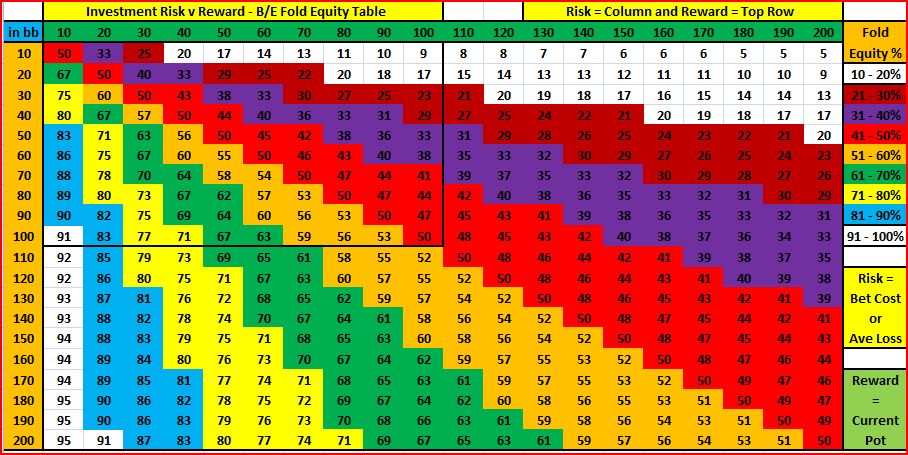Equity Formula Poker
EDIT: It has come to my attention that I defined “break even” incorrectly. Instead of defining it to be 0 EV, it should actually be defined as our EV if we go to showdown. This is because we need to compare the two best lines (checking vs betting) and see which one is better (ignoring getting raised off hands and having to c/f to a bluff). I will correct the chart soon.
Fold Equity Formula Poker

To calculate your poker equity - or how often you should win a hand, you can use a simple formula. Count how many outs you have. For example, if you're drawing to a flush, you have 13 suited cards, two in your hand, two on the board - leaves 9 outs. The chance of you hitting on the turn is 9.4 (+4) = 40%. The game of poker is a card game played among two or more players for several rounds. There are several varieties of the game, but they all tend to have these aspects in common: The game begins with each player putting down money allocated for betting. During each round of play, players are dealt cards from a standard 52-card deck, and the goal of each player is to have the best 5-card hand at.
This summer I did a little analysis of required fold equity (FE). I had high hopes for the project, but nothing great came of it. What did come out of it, however, was a chart that might be of use to you guys. It’s not what I wanted to release, but I don’t really have the time to do more meaningful analysis atm.
The chart assumes the pot is unopened when you’re to act (either you’re first in or it’s checked to you). So, for example, if you’re thinking of raising with FE this chart wouldn’t be accurate and you’d need a little more fold equity. It also assumes your opponet will either call or fold and there won’t be any further action after. If your hand has implied odds (ie, you’re drawing to best hand) then you stand to win a little when you hit and so can have a bit less FE. But, keep in mind your opponent can potentially raise and possibly deny you the win%. If you have reverse implied odds (ie, much of your win % includes making a pair that could give someone 2-pr) and you stand to potentially lose a little if you make your hand, you want a bit more FE.
Also, situations with more than one opponent get trickier and I wouldn’t use this chart for that. For example, if each opponent will fold 40% of the time, your FE is only 16% (you want both to fold, so .4*.4). So technically here you’d have to find the square root of the fold percentage and that’ll give you the required average FE of each opponent, but even then the implied odds get messy.
Nevertheless, this chart made clear to me that what I considered required fold equity was way too conservative. For example: betting 2/3 of the pot with just 10% to win drops the required fold equity from 40% to 30%, which is a 25% decrease.
I thought it was pretty cool how small sources of equity can combine to make for an unexpectedly profitable situation. My goal as a poker player was to identify hidden sources of equity, but it was cut short when I decided to pursue math and school.
Related post: Required Fold Equity equation
Equity Formula Poker Strategy
Filed under: Poker Math, Strategy Tagged: fold equity, online poker, poker, Poker Math, poker strategy